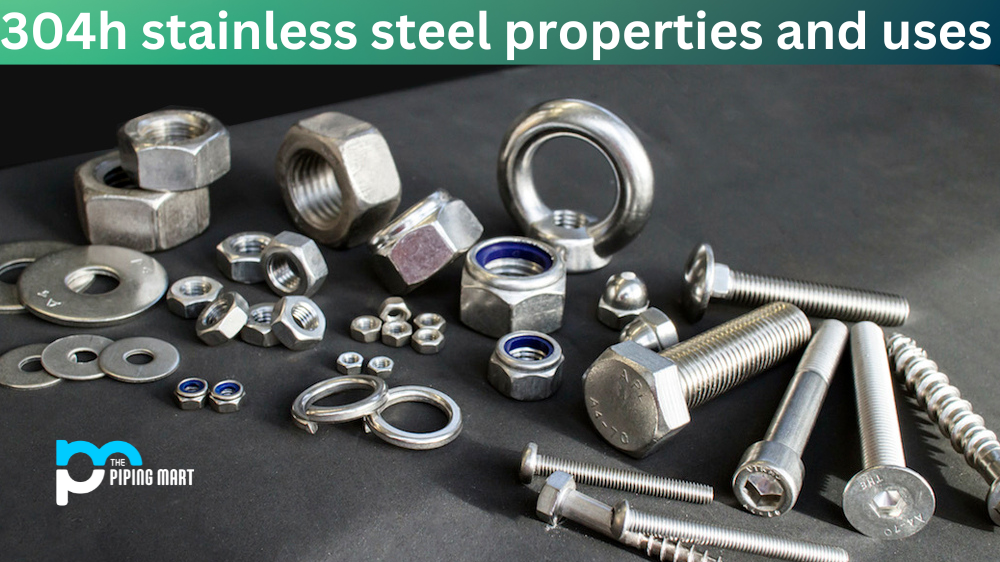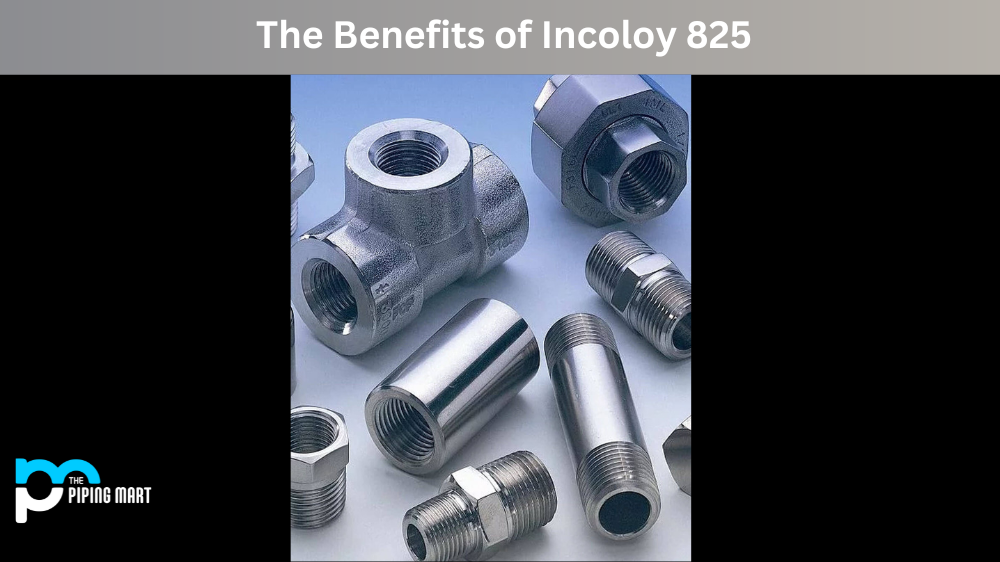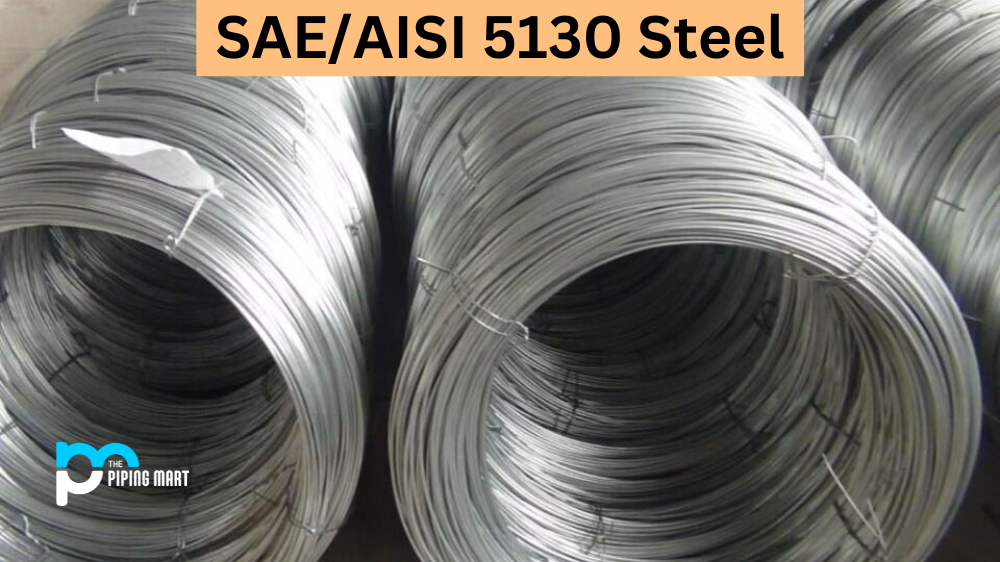If you’re looking for a steel alloy with superior corrosion resistance and strength, 304h stainless steel should be your number one choice. It has excellent properties that make it superior to other types of steels such as austenitic and ferritic. In this blog post, we’ll explore the various properties of 304h stainless steel in detail, including its composition, mechanical characteristics, uses, and more! With its amazing characteristics and versatility across industries from food production to oil rigs, read on to discover why 304h is becoming an increasingly popular metal alloy anywhere there is a need for efficiency and reliability.
What Forms is 304H Stainless Steel Available at Piping Mart?
- 304H Stainless Steel Pipes
- 304H Stainless Steel Bolts
- 304H Stainless Steel Bars
- 304H Stainless Steel Tubing
- 304H Stainless Steel Pipe Fittings
- 304H Stainless Steel Channels
- 304H Stainless Steel Flanges
- 304H Stainless Steel Bolts
- 304H Stainless Steel Plates
- 304H Stainless Steel Valves
304H Stainless Steel Composition
304h stainless steel is stainless steel that is ideal for foundries due to its unique set of chemical properties. This alloy combines iron, chromium, nickel, and other elements in its composition to create a robust and durable material that can last for many years in extreme heat or high-pressure situations. Not only does 304h stainless steel resist oxidation and corrosion but it also stands up well to abrasion, making it the perfect choice for many industrial applications. Additionally, 304h’s chemical composition creates a strong bond with other metals which helps ensure that welds remain extremely strong and intact over time. In summary, 304h stainless steel is an ideal solution for many industrial needs due to its balanced combination of beneficial properties.
| UNS NO | Grade | C | Si | Mn | P | S | Cr | Mo | Ni | N |
| S30409 | 304H | 0.04/0.10 | 0.75 | 2.00 | 0.045 | 0.030 | 18.00/20.00 | – | 8.00/10.50 | 0.10 |
304H Stainless Steel Physical Properties
304H steel is an ideal material for Inconel sheets because of its impressive suite of physical properties. It boasts impressive amounts of strength and toughness and offers resistance to a wide range of corrosive elements. It can also withstand high temperatures without losing its flexibility, making it a popular choice for high-temperature applications. Additionally, 304H stainless steel have excellent ductility, which results in components that are easy to form and fabricate into intricate shapes. This makes 304H Inconel sheets ideal for use in a variety of applications spanning many industries.
304H Stainless Steel Mechanical Properties
304h SS is a type of stainless steel and it has some impressive mechanical properties. It exhibits good strength, even at elevated temperatures, and it maintains its strength over long periods of time. Additionally, 304h stainless steel has a ductility that makes it easy to form and shape as needed. Plus, because of its corrosion resistance qualities, it can be used in applications with high exposure to aggressive environments. Altogether, these make 304h stainless steel an ideal choice for applications where durability and performance are essential.
304H Stainless Steel Specifications
304H Stainless Steel Seamless / Welded Pipe – ASTM A312 TP 904L
304H Stainless Steel Seamless / Welded Tuning – ASTM A269 TP 904L
304H Stainless Steel Bar / Rod – ASTM A276 / A479 TP 904L
304H Stainless Steel Forging – ASTM A182 F904L
304H Stainless Steel Sheet / Plate – ASTM A240 UNS N08904
304H Stainless Steel Welding Consumable – AWS A5.9 ER 385
304H Stainless Steel Properties
UNS S30409 is a high carbon austenitic stainless steel that is typically used in elevated temperature service. Some of the key properties of 304H stainless steel include the following:
- Good formability
- High strength
- Excellent weldability and traceability
- Good oxidation resistance in intermittent service up to 1500°F
- Good stress rupture and creep strength properties
- Higher carbon content for improved high-temperature strength
- Let’s take a more detailed look at some of these key properties.
Formability:
304H austenitic stainless steel can be easily formed using conventional methods. This high-strength material exhibits good ductility in the annealed condition.
High Strength: In the as-welded condition, 304H stainless steel offers higher strengths than standard 304 austenitic stainless steel. This higher strength level is due to the higher carbon content of 304H stainless steel.
Weldability and Brazeability:
Like other austenitic grades, S30409 has excellent weldability and traceability. These properties are due to the presence of austenite in the microstructure of 304H stainless steel.
Oxidation Resistance: The higher carbon content of 304H stainless steel gives this grade improved high-temperature strength compared to standard 304 austenitic stainless steels. As a result, 304H stainless steel is often used in applications where exposure to elevated temperatures is a concern.
Stress Rupture and Creep Strength Properties: The higher carbon content of 304H also gives this grade improved stress to rupture and creep strength properties compared to standard 304 austenitic stainless sheets of steel. These properties make 304H an ideal choice for high-temperature applications such as boiler tubes and piping systems.
304H Stainless steel Uses
304h stainless steel is often used in applications that require superior strength and resistance to corrosion. It is the alloy of choice for chemical processing, petrochemicals, and other industrial processes, as it offers increased strength for such environments. It also has a high resistance to sulfide stress cracking caused by sulfur compounds and good pitting resistance in nearly every chloride environment, making it an excellent choice for piping systems exposed to sea or brackish waters. Its versatility lends it to other uses like refinery heat exchangers, pulp machines, synthetic fiber-producing equipment, pipelines, cladding on steel structures, and food processing equipment, just to name a few.
Conclusion:
SS 304H is a high carbon austenitic stainless steel that offers good formability, high strength, excellent weldability and traceability, and good oxidation resistance in intermittent service up to 1500°F. The higher carbon content of 304H also gives this grade improved stress to rupture and creep strength properties compared to standard304 austenitic stainless steels, making it an ideal choice for high-temperature applications such as boiler tubes and piping systems.

Abhishek is a seasoned blogger and industry expert, sharing his insights and knowledge on various topics. With his research, Abhishek offers valuable insights and tips for professionals and enthusiasts. Follow him for expert advice on the latest trends and developments in the metal industry.




